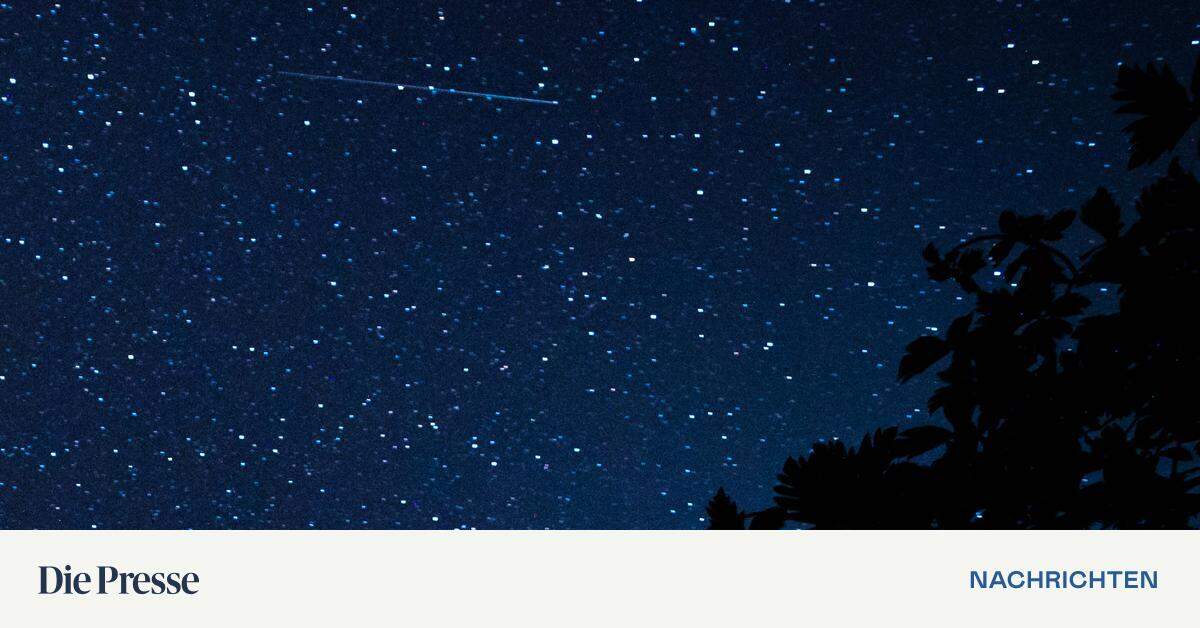Every year the Earth passes through the orbit of a comet. The dust trail can be seen in the sky as a meteor shower. The phenomenon peaks early Monday evening.
This year the constellation does not offer bad conditions for observing the annual Perseid meteor shower: the maximum of the phenomenon will occur on Monday (August 12) in the afternoon or early evening hours in this country. According to the Vienna Astronomical Association (WAA), you can expect many sightings after that, which – provided there is a clear view of the night sky – should not be disturbed by the moonlight.
Every year in mid-August, Earth passes through the orbit of Comet 109P/Swift-Tuttle, whose dusty trail creates the Perseid meteor shower. This happens because the dust grains hit Earth's atmosphere at an average speed of about 60 kilometers per second. There they vaporize at high altitudes, causing the air behind them to glow. The name “Perseids” comes from the fact that the stars are falling from the constellation Perseus.
Sightings are expected throughout the night.
The meteor is also called “Lawrence's Tears.” Because its appearance coincides with the name day of the martyr Lawrence on August 10, it was once interpreted as tears from heaven for his martyrdom. The constellation rises late in the evening in mid-August in the northeast and rises in the eastern half of the sky until dawn.
When observing the absolute maximum on August 12 between 3:00 p.m. and 6:00 p.m., daylight overlaps at our latitudes. However, because the maximum is “relatively wide,” as WAA President Alexandre Pichard explains, meteor sightings are expected to increase throughout Tuesday night. Relatively little disturbing light comes from the moon, as the waxing crescent won’t cause much visual noise. On the night of the Perseids’ peak, the moon sets in Vienna at 10:52 p.m., says Pichard, who is not planning public viewing with WAA this year, unlike in previous years.
It's really dark only in the oases of night.
The umbrella environmental organization UWD recently took the annual rainfall as an opportunity to point out the continuing increase in light pollution. It only really gets dark nationwide in the untouched nocturnal oases, such as the area around the Kaunergrat Nature Park House in Kaunertal, in the Attersee-Traunsee Star Park, in the Almhaus at Hochbäreneck or in the Gesäuse National Park in Johnsbach. The border triangle between Styria, Lower and Upper Austria is also one of the regions in Europe least affected by light pollution. In light of this finding, better legislation is needed to limit artificial lighting.
No special equipment is needed to observe the Perseids. Most possible sightings – up to 100 per hour – occur in areas with sufficient darkness, such as mountains. Because binoculars or telescopes narrow the field of view, they are actually a hindrance when viewing the Perseids. According to WAA information, the phenomenon can be observed until August 24. (APA)
There is more information about the Perseids. here.

“Food practitioner. Bacon guru. Infuriatingly humble zombie enthusiast. Total student.”








More Stories
Kyiv: Russian Kursk offensive halted
US Presidential Election: Former US Government Officials Warn Against Donald Trump's Election
Netherlands wants to leave asylum system